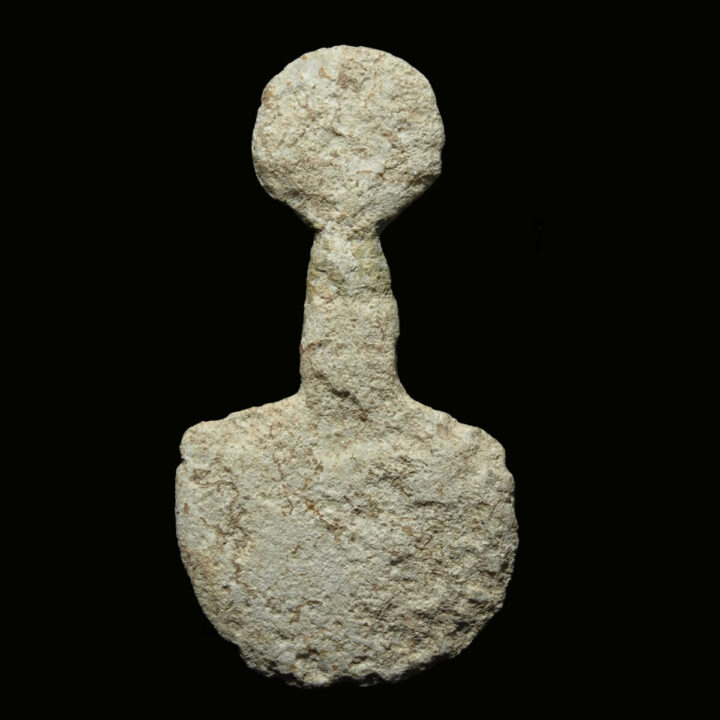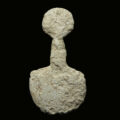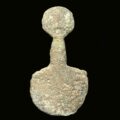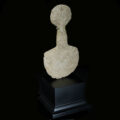Kusura Marble Idol
Culture: Anatolia
Period: 2700-2400 B.C.
Material: Marble
Dimensions: 13 cm high
Price: Sold
Ref: 6539
Provenance: French private collection, acquired at least in the 1970s. Thence Bonhams auction London on 23rd October 2012, lot 204. Last in an English collection in Cambridgeshire.
Condition: Surface with heavy encrustation, ancient chips as seen in the photograph. Professionally reassembled on the neck without any missing parts.
Description: Charming Anatolian marble idol of the so-called Kusura type. The fertility statuettes, also known as violin idols because of their shape, come from the west coast of Asia Minor and have been attested far into the mainland. They are contemporaries of the famous Cycladic idols. Our specimen belongs to the early form without arms and locks of hair. From the circular head, the strong, straight neck widens downwards and, sloping slightly, merges directly into the disc-shaped body, rounded at the bottom in fine harmony. The idol is extraordinarily thinly crafted and almost translucent, it probably had a special meaning in the fertility rite. Experts believe that the idols were ritually broken in the rite, which is why most Kusura statuettes today are reassembled at the neck. See for the type “Art and Culture of the Cyclades”, exhibition catalog of the Baden State Museum Karlsruhe, 1976, No. 495, shown on p. 380, described on p. 549. Mounted.






